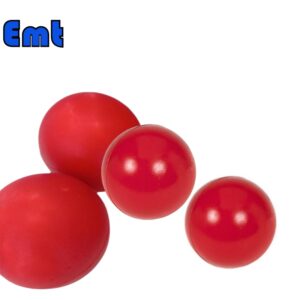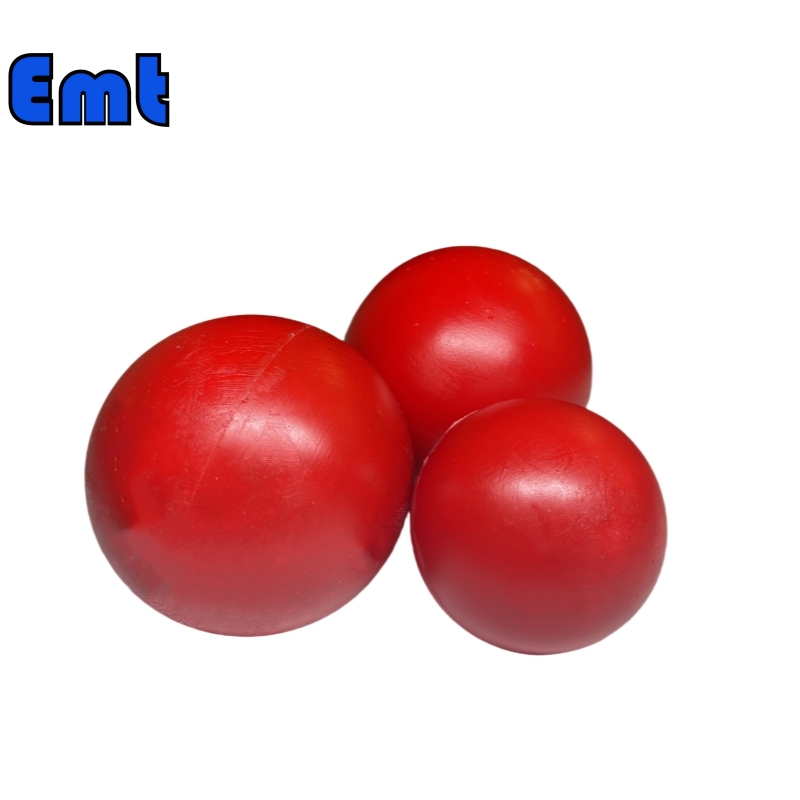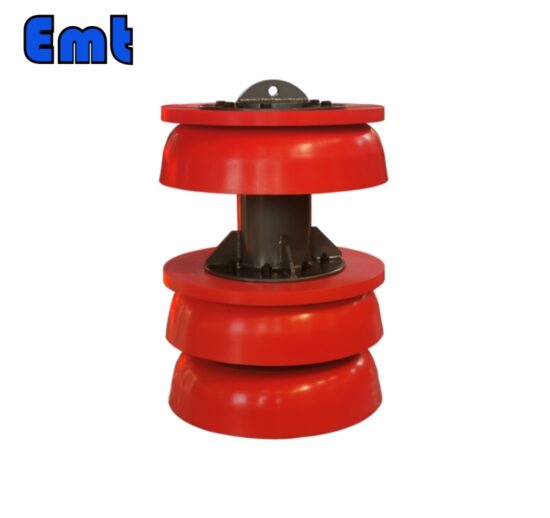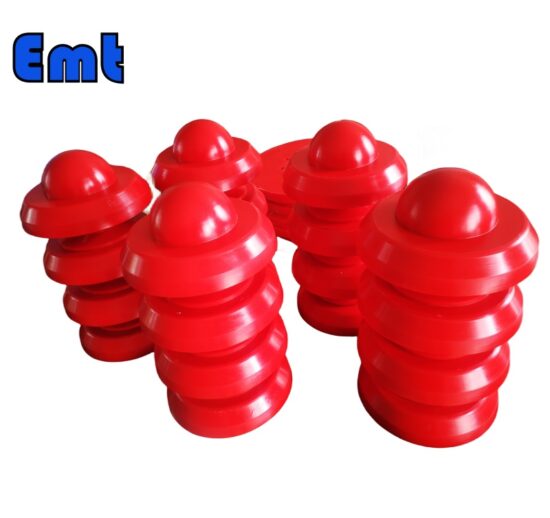
A cleaning pig is made of wear-resistant chloroprene rubber. It works by using gas pressure to push it through the pipeline. The pig is slightly larger than the pipeline. It seals tightly to clear debris.
Natural gas raw gas pipelines generally contain water, hydrogen sulfide and impurities from the bottom of the well. In the transportation process, due to the ups and downs of the terrain and other reasons, resulting in the accumulation of liquid or solid in the pipeline in low-lying places, resulting in a decrease in pipeline transportation efficiency, and even cause pipeline blockage in winter.
Therefore, it is necessary to clean the pipeline. When it comes to pipeline cleaning, the typical method involves employing a cleaning ball slightly larger than the inner diameter of the pipe. This ball is inserted into the natural gas pipeline at the service station, requiring the establishment of a special receiving device. Subsequently, natural gas pressure is utilized to propel the cleaning ball from the slightly higher pressure end to the receiving ball station at a slightly lower pressure. This entire procedure is commonly referred to as pigging.
Requirements for cleaning the pipeline
Using Piping Ball Pigs is essential for every pipeline. If the decision is made to employ pigging balls for pipeline cleaning, specific process requirements must be articulated before pipeline design. The particular requirements include:
Ensure that the pipe sections maintain the same diameter specification, without any reduction pipes, and that the pipe wall thickness does not vary significantly (generally within 2~3mm).
Weld pipe branch pipes using “riding mouth” welding rather than “insert welding” to prevent potential pig ball operation obstructions.
Utilize stamped elbows in the pipeline instead of welding elbows, wrinkled elbows, or simmer bends with ultra-standard ellipticity.
Install ball valves on the pipeline instead of gate valves or globe valves to allow the passage of pigging balls.
Implement necessary measures before pigging at locations with pipe fittings and facilities that could impede the passage of pigging balls.
The method of using Piping Ball Pigs to clean the pipeline
Equipment:
Processing a set of pig ball serving and receiving devices is necessary. To make the receiving device reusable, the serving and receiving device can be divided into several grades in practical application. For example, the large 3# barrel is made of DN350 pipe section, which is suitable for the cleaning use of DN300DN250 and DN200 pipes; the middle 2# barrel is made of DN225 pipe section, which is suitable for the use of DN200 and DN150 pipes; The small 1# barrel is made of DN150 pipe section and is suitable for pipeline use below DN100. In this way, only need to serve the device and collect the ball.
Manufacturers produce the connecting short pipe of the device in various specifications, selecting the appropriate one according to the specifications of the pipeline requiring cleaning. However, it is crucial to note that the diameter of the small connecting short pipe is smaller than the small end of the eccentric-size head. In this scenario, the flange connecting the ball cylinder can become as an eccentric flange. Aligning the lower edge with the lower edge of the eccentric-size head flange enables the pig ball to roll into the cleaning pipe autonomously.
Moreover, the pressure gauge on the ball serves the purpose of monitoring the pressure that propels the pig ball to move and analyzing its operation. Typically, there exists a pressure of about 0.1~0.3MPa to drive the pig ball forward under normal conditions (the exact value fluctuates based on factors like pipe diameter, slope, length, and the presence of water and debris within the pipe). In case of a blockage in the pipe, adjust the ball pressure as requirement.
Spécifications
| Bare Foam Pig | LCQZ-RTN | 1. Soft texture and good flexibility. | Starting pressure: 0.02 MPa |
| 2. With strong water absorption, the deformation amount can reach 60%. | Density: 35 kg/m³~220 kg/m³ | ||
| 3. For dewatering, cleaning, and drying pipelines use. | Withstand pressure: 7 MPa | ||
| Stretch rate: 320% | |||
| Compression ratio: 60 | |||
| Flex life: 50,000 times | |||
| Attrition rate: 4 mm/100 km | |||
| Operating distance: 50 km~150 km | |||
| Operating temperature: -30℃~100℃ | |||
| Polly Foam Pig | LCQZ-RTR | 1. Polyurethane material foams its interior. A polyurethane elastomer coating covers the surface. | Starting pressure: 0.02 MPa |
| 2. Good flexibility and certain wear resistance. | Density: 35 kg/m³~220 kg/m³ | ||
| 3. The deformation amount can reach 50%, which is the most widely used foam pig. | Withstand pressure: 7 MPa | ||
| 4. For scrubbing, descaling, and fluid isolation of pipes use. | Stretch rate: 320% | ||
| Compression ratio: 50 | |||
| Flex life: 50,000 times | |||
| Attrition rate: 2 mm/100 km | |||
| Operating distance: 100 km~300 km | |||
| Crisscross Foam Pig | LCQZ-RTCC | 1. Polyurethane material foams its interior. A polyurethane elastomer coating covers the surface. | Operating temperature: -30℃~100℃ |
| 2. High surface hardness and large friction coefficient. | |||
| 3. Has high elasticity and toughness. | |||
| 4. Used for pipeline cleaning, cleaning, and cleaning impurities. |








Il n’y a pas encore d’avis.